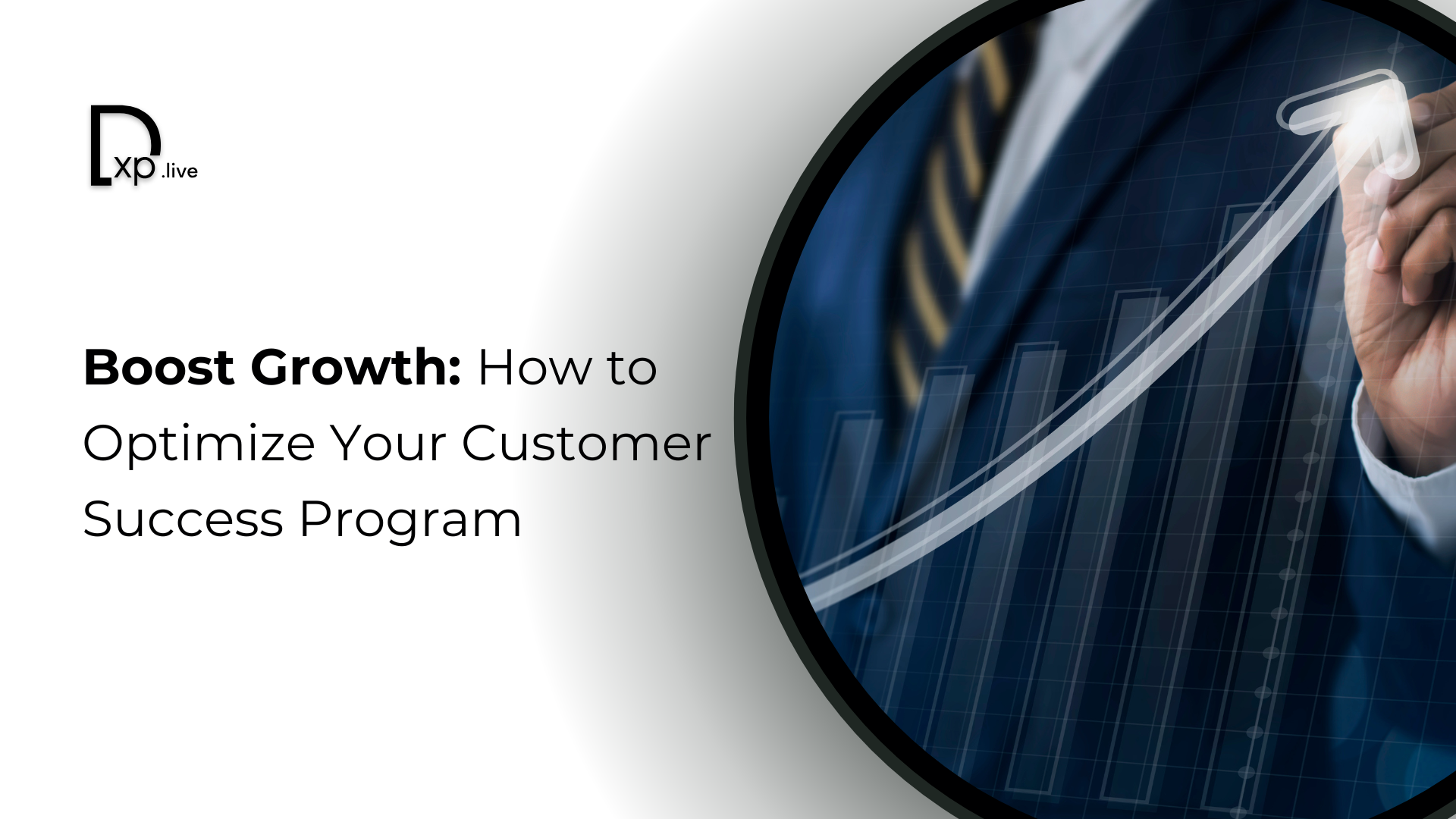Boost Growth: How to Optimize Your Customer Success Program

Owning customer success optimization software has become one of the leading business objectives for growth in today’s professional market. Targeting customer success programs has helped these organizations experience a higher churn risk of customers along with an increase in their customer lifetime value.
Using retention strategies like building relationships through proactive customer support and customer success can help the business in building relational databases. In this manner, it occurs that, being engaged in emotionally meaningful relationships with clients, companies make them their loyal followers.
Something else that helps with customer success is the ability to implement engagement strategies and metrics to important engagement of the customers for strategies that lead to more than just satisfaction but a happy experience.
It is an absolute necessity for businesses to continuously measure and enhance the defined strategy for achieving customer satisfaction and loyalty. In short, there is a need and importance to explore the customer success strategies and their implications on the achievement of a business.

1. Understand Your Customer’s Journey
The difference between these cycle stages is paramount to the Customer Success Optimization. By mapping the journey, you can find which are major touch points that influence or affect significantly to engagement and satisfaction. This will in turn Improve Customer Success Programs and succeed over time, aligning your programs at all stages to the customers' needs. When focused on Customer Retention Strategies, they strengthen relationships and reduce churn. By following Customer Success Best Practices, you can be more proactive in solving challenges and leaving expectations.
Proactive customer support, catching issues before they affect users, leading to better satisfaction We help ensure deeper connections through targeted Customer Engagement Tactics, such as Personalized Communication and we provide individual solutions for each customer; this managed approach to delivering maximum value is known as our Personalized Solutions Approach. In conclusion, by tracking Customer Success Metrics you are able to assess your effectiveness and improve in a cycle of continuous improvement.
2. Build a Proactive Support System
To build a proactive support system, focus on Customer Success Optimization by anticipating customer needs before they arise. Leverage advanced technologies like chatbots and AI to offer faster resolutions and streamline the support process. Integrating these tools helps enhance Customer Engagement Tactics and improves the overall Customer Success Program. Focus on Proactive Customer Support to prevent issues, rather than react to them, which strengthens Customer Retention Strategies. Incorporating Personalized Customer Success ensures customers feel valued and understood. Finally, consistently measure Customer Success Metrics to track progress and ensure alignment with Customer Success Best Practices, leading to sustained satisfaction and loyalty.
3. Personalize Communication and Engagement
Customer Success Optimization and Improving Customer Success Programs move to a whole new level with communication and engagement designed on an individual basis. Such an approach enables customers to receive relevant recommendations, offers, and solutions, as it communicates with their distinct preferences. This customized approach is useful in the development of customer retention strategies as it helps maintain relationships and ensures that customers feel appreciated hence enhancing loyalty.
Personalized customer success in turn develops the overall customer experience as it makes interactions more valuable and significant. Also, anticipating customer support requirements and proactively addressing problems before they arise interact to increase engagement and satisfaction – as well as trust.
A customer-first approach allows for solutions to be tailored according to the needs and behaviors of individual customers allowing for deepened relationships. Finally, there is a need to measure customer success indices in order to evaluate the results of such measures as well as to improve efforts in regard to customer satisfaction and success in the long term.
4. Empower Your Customer Success Team
Empowering your Customer Success team is essential for Customer Success Optimization and long-term business growth. Start by providing the right tools and training to equip your team with the resources needed to enhance Customer Retention Strategies. Encourage a customer-first mindset across all departments to ensure seamless collaboration and a unified approach to customer satisfaction. Implement Customer Success Best Practices, such as proactive customer support and tailored Customer Engagement Tactics, to build stronger relationships with clients.
Focus on personalized customer success by addressing individual needs and preferences. Regularly monitor Customer Success Metrics to gauge performance and identify areas for improvement. By empowering your team, you can drive better results, improve your Customer Success Program, and foster loyalty.
5. Measure Success: Key Metrics to Track
To optimize customer success too, tracking the NPS and other recurring and future revenue indicators like churn rate or LTV can be of extreme importance as they show how effective your program has been in promoting satisfaction, retention, and loyalty. Monitoring such customer success metrics gives contextual information to the businesses to refine the customer and their respective customer success program in a more data-centered fashion.
In addition to that the exposed metrics like churn rate are important because they help identify opportunities in which customer retention can be optimally scaled. Providing active customer support and offering customized customer success strategies are essential to mitigating churn and increasing customer involvement.
Incorporating Customer Success Best Practices also benefits to the fact that your team will be working towards the same strategies which in turn helps strengthen customer relationships, driving improved customer satisfaction.
In summary, to achieve Customer Success Optimization, businesses must focus on continuous evaluation and adaptation of their customer success programs. Ongoing refinement, driven by regular feedback loops, is essential for improving the customer success program and ensuring it aligns with evolving customer needs. Implementing customer retention strategies and proactive customer support helps foster strong relationships while adopting customer success best practices ensures long-term success. By leveraging personalized customer success approaches and closely tracking customer success metrics, businesses can enhance customer engagement tactics and maximize satisfaction, leading to sustainable growth and loyalty.
FAQs
1. What is Customer Success Optimization, and why is it important?
Customer Success Optimization focuses on refining strategies to enhance customer satisfaction and retention. Continuous improvements, such as personalized customer success and proactive support, boost engagement and loyalty, ensuring long-term growth.
2. How can personalized communication improve a Customer Success Program?
Personalized communication, driven by data insights, tailors messaging to customer preferences. This strengthens relationships, boosts customer retention strategies, and enhances satisfaction by making customers feel valued.
3. What are the best customer success practices for enhancing retention?
Best practices include delivering personalized experiences, offering proactive support, and tracking customer success metrics to anticipate needs and reduce churn, ultimately improving retention.
4. How do customer success metrics help improve my Customer Success Program?
Customer success metrics provide key insights into program performance, helping businesses identify areas for improvement and optimize customer engagement tactics to better meet customer needs.
5. What are effective customer engagement tactics for building stronger relationships?
Effective customer engagement tactics include personalized outreach, regular follow-ups, and proactive support. These strategies help foster trust, improve satisfaction, and increase loyalty.



